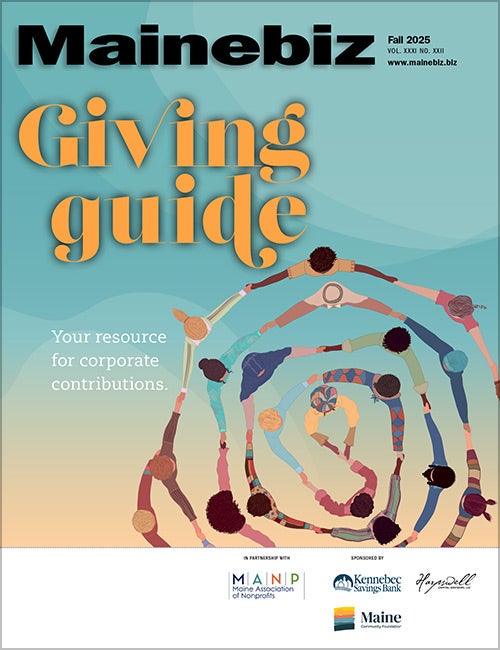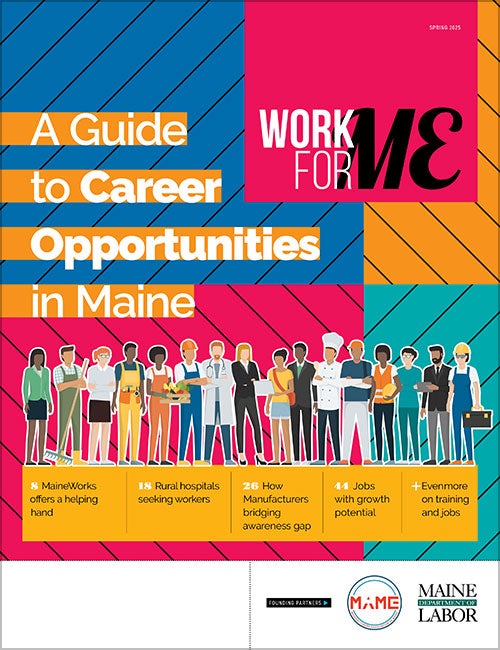
Processing Your Payment
Please do not leave this page until complete. This can take a few moments.
- News
-
Editions
View Digital Editions
Biweekly Issues
- December 15, 2025
- December 1, 2025
- Nov. 17, 2025
- November 03, 2025
- October 20, 2025
- October 6, 2025
- + More
Special Editions
- Lists
- Viewpoints
-
Our Events
Event Info
Award Honorees
- Calendar
- Biz Marketplace
How to counter workplace stress? Try using the other half of your brain
Does it seem to you that workplace stress has cranked up significantly in recent months? We know so much in general about what produces stress on the job, but how can we truly mitigate it in a way that enhances both our productivity and our well-being? The right and left halves of our brain might hold clues.

Currently, I have contracted to work out of state with a group of highly skilled engineers on a required aspect of their jobs that they tackle only once a year — a public presentation for their company's top brass.
These are experienced, capable, valuable employees, yet many are gripped with anxiety so fierce that a huge portion of our work revolves around actively countering stress. Box breathing, affirmations and power poses have become our toolkit.
Left-brain careers are particularly vulnerable to anxiety when something unfamiliar looms. As one participant put it: “Honestly, I’d rather have dental surgery than give a presentation.”
Yikes.
Why is that? As Norman Farb and Zindel Segal write in the book “Better in Every Sense,” professions that emphasize left-brain dominance reinforce the Default Mode Network — the brain’s tendency toward perfectionism, over-analysis and self-criticism. (In other words, a perfect recipe for stress in any situation, including presentation panic.)
This also explains the dreaded phenomenon we’ve all endured: “Death by PowerPoint.” Eyes glued to the screen, reading aloud bullet points we can all see for ourselves. As Melissa Marshall points out in her TED Talk entitled "Talk nerdy to me," they’re called bullet points for a reason — because they can kill your presentation.
4 ways to relieve stress
Professionals trapped in rigid loops need to disrupt the cycle, shift gears and tap into a more flexible, right-brain creative state, particularly when presenting, but also when encountering anything stress-producing on the job. Sounds good — but how?
Here are four ways to weave right-brain activity into daily life to counteract left-brain stress.
Tell micro-stories to connect: Practice framing one fact or achievement as a short story. Humans connect through narrative, not numbers. Stories work for presentations, but also in sales, staff meetings and team management.
Take art breaks: Sketch, doodle or color for five minutes daily — no talent required. It’s about loosening mental rigidity, not creating art. Try coloring for five minutes and gauge your emotional state before and afterward.
Move mindfully: Yoga, dance, tai chi — anything that shifts you from structured to flowing movement helps unlock mental flexibility. Ever feel like your body is being dragged around by your brain? Just 10 minutes of yoga a few mornings a week can help engage your physicality and lighten your mental load.
Play with curiosity: Explore something fascinating with no productive goal — puzzles, improv games, cloud-watching all qualify. Even if you’re at a desk for most of your workday, you can quickly engage your curiosity by posing a starting question to AI platforms like ChatGPT and Claude. These kinds of explorations can refresh our working experience and even produce small bursts of joy.
Joy actually matters
In my work with the engineers, I encourage them to peel their attention away from “what will the big boss think?” and instead set a new goal: Enjoy one moment of their presentation by telling a short success story that puts their data into human context. This injects energy, personality — and humanity — into the first 60 seconds. That first minute will make or break the whole endeavor.
When I floated this idea, their faces lit up.
Of course, I’m now getting pushback from leadership because “this isn’t the way we do things here.” Ah yes … the organization’s own Default Mode Network at work. But as the old saying goes, insanity is doing the same thing over and over again and expecting different results.
The next time we meet, I’ll need to make the case for some right-brain story joy. I look forward to the challenge.
About the author
Kym Dakin-Neal is director of Voice Into Learning LLC and a certified coach specializing in effective communications. Her book, “Head, Heart & Hands Listening in Coach Practice,” was released in 2023 through Routledge Publishers of London. She can be reached at kdakin56@gmail.com
Mainebiz web partners
Related Content

The Giving Guide
The Giving Guide helps nonprofits have the opportunity to showcase and differentiate their organizations so that businesses better understand how they can contribute to a nonprofit’s mission and work.
Learn More
Work for ME
Work for ME is a workforce development tool to help Maine’s employers target Maine’s emerging workforce. Work for ME highlights each industry, its impact on Maine’s economy, the jobs available to entry-level workers, the training and education needed to get a career started.
Learn More
Groundbreaking Maine
Whether you’re a developer, financer, architect, or industry enthusiast, Groundbreaking Maine is crafted to be your go-to source for valuable insights in Maine’s real estate and construction community.
Learn more-
The Giving Guide
The Giving Guide helps nonprofits have the opportunity to showcase and differentiate their organizations so that businesses better understand how they can contribute to a nonprofit’s mission and work.
-
Work for ME
Work for ME is a workforce development tool to help Maine’s employers target Maine’s emerging workforce. Work for ME highlights each industry, its impact on Maine’s economy, the jobs available to entry-level workers, the training and education needed to get a career started.
-
Groundbreaking Maine
Whether you’re a developer, financer, architect, or industry enthusiast, Groundbreaking Maine is crafted to be your go-to source for valuable insights in Maine’s real estate and construction community.
ABOUT
NEW ENGLAND BUSINESS MEDIA SITES
No articles left
Get access now
In order to use this feature, we need some information from you. You can also login or register for a free account.
By clicking submit you are agreeing to our cookie usage and Privacy Policy
Already have an account? Login
Already have an account? Login
Want to create an account? Register
Get access now
In order to use this feature, we need some information from you. You can also login or register for a free account.
By clicking submit you are agreeing to our cookie usage and Privacy Policy
Already have an account? Login
Already have an account? Login
Want to create an account? Register








0 Comments